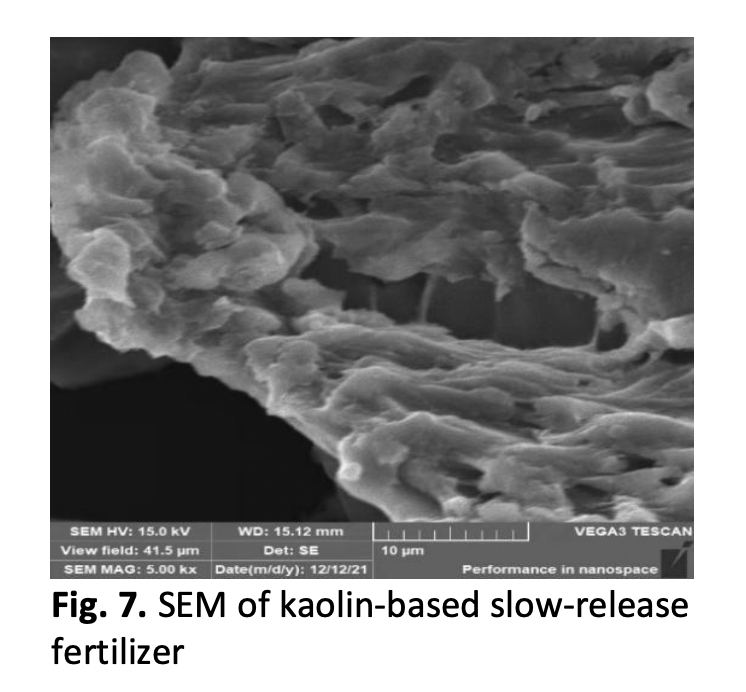Preparation and Properties of Kaolin Based Slow-Release Fertilizer
DOI:
https://doi.org/10.37934/araset.30.2.205215Keywords:
Crosslinking, network structure, reverse suspension method, slow-release fertilizer, ureaAbstract
A slow-release fertilizer is important to improve soil conditions and enhances food security through continuous plant supply. With urea as a nitrogen source, kaolin as a carrier, acrylic acid as a reaction monomer, potassium persulfate as an initiator, N, N '- methylene bisacrylamide as a crosslinking agent, under the action of cyclohexane and sorbitan monostearate, kaolin based slow-release fertilizer was synthesized by reverse suspension method for the first time. The optimum conditions for the synthesized polymer were 0.6 g kaolin, 2 g urea and 80 ℃ temperature. The maximum water absorption capacity of the slow-release fertilizer was as high as 219.75 g/g. The water retention performance lasted for at least 10 days, and the slow-release property lasted for at least 28 days. The release of nitrogen content was slow and stable. The FTIR analysis indicated that the cross-linking occurred between kaolin, urea, and resin meanwhile, the SEM analysis supported that the product had a special network structure with a rough and porous surface. TGA analysis confirmed the stability of the kaolin-based slow-release fertilizer. The findings fully validated that the synthesis method of slow-release fertilizer was feasible and has the potential to be a popular commercialized product be popularized in areas lacking water or fertilizer.
Downloads


























